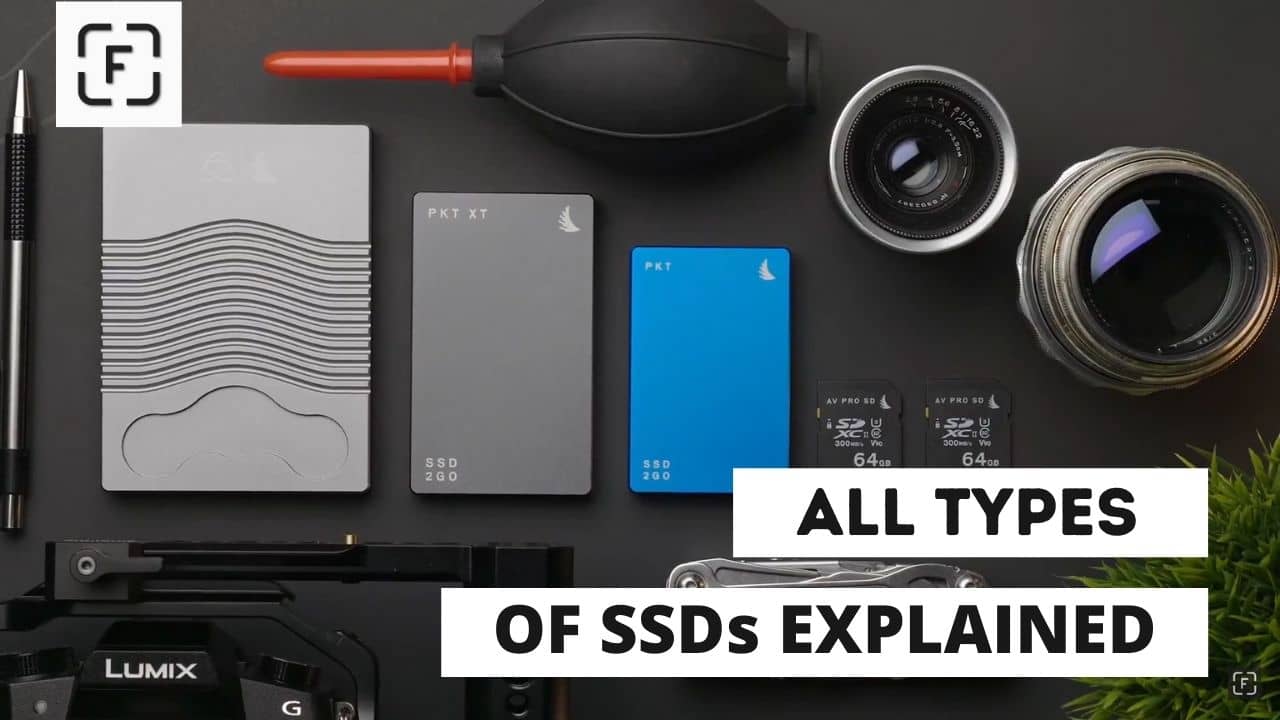All types of SSD Explained, M.2 NVMe Vs M.2 SATA Vs 2.5 SATA
SSD stands for Solid State Drive. It is a new generation of storage device used in computers. SSDs use flash-based memory, which is way faster than traditional mechanical hard drives.

SSD stands for Solid State Drive. It is a new generation of storage device used in computers. SSDs use flash-based memory, which is way faster than traditional mechanical hard drives.
Today, SSDs come with various form factors and various types. Their price range also varies according to their types, form factors, speed and brands. So, people get confused with all these. This article aims to clear all your doubts about SSDs.
Form Factor/ Shapes and Sizes
Most of the SSDs today come in 3 form factors.
- 2 SDD (smaller like a stick of RAM)
- 5 inch SSD (2.5 inches) and
- Add-In-Card ( like GPU) (bigger has inbuild cooler / uses PCI Express bus)
Add-In-Card is quite a fast SSD and some of them even have inbuild coolers to control thermal, but due to its size, it is not practical. That's the reason why you will see only M.2 and 2.5 inches SSD in the market, not Add-In-Card SSD.
Types of SSD
There are usually five types of SSDs
- SATA 2.5
- 2
- SATA M.2
- NVMe M.2 and
- NVMe PCIe
Among these five types,
- SATA 2.5 and U.2 is of 2.5 form factor
- SATA M.2 and NVMe M.2 uses M.2 form factor, whereas
- NVMe PCle comes in AIC form factor.
But the thing is, for regular consumers, only three types of SSD are available: NVMe M.2, SATA M.2 and 2.5 SATA.
Terms you need to know
SATA: SATA, also known as Serial ATA, stands for "Serial Advanced Technology Attachment." It is just the interface through which your SSD or HDD connects to the motherboard. It was designed for a traditional HDD, so it's pretty slow. The latest version of SATA is SATA III as of 2022.
PCI Express Bus: PCIe or PCI Express is a high-speed interface compared to SATA. PCIe has something called lanes. And 1 lane is referred to as x1. So basically, the more these lanes are, the faster it is. The latest version of PCIe, PCIe 5.0 with only one lane (x1), has a speed of 32 gigatransfers per second (GT/s), which is really really fast.
NVMe: NVMe stands for Non-Volatile Memory Express. It is the communication protocol that was developed for SSDs. To simply understand, it is software for SSDs and without these, your SSD will not work as fast as it should.
M.2: M.2 is just the memory form factor that uses the PCIe bus. It is pretty similar to what RAM looks like.
Three main types of SSDs Available
NVMe M.2
NVMe M.2 uses the technology of NVMe protocol and comes in M.2 form factor. It uses PCIe as a connection interface, and as we know, PCIe is way faster than SATA and NVMe is a protocol developed epically for SSDs. NVMe M.2 is very very fast. It is the fastest SSD available to consumers. But you need a dedicated connecter that supports NVMe M.2.
- The latest version, NVMe M.2 5.0 SSD, has a read speed is up to 14 GBps, whereas write speed is up to 12 GBps.
- Example: Samsung 970 EVO Plus
SATA M.2
SATA M.2 uses SATA protocol and comes in M.2 form factor. The connection Interface needed is a SATA interface. Since it uses SATA it is obviously slower than NVMe M.2. SATA M.2 SSDs can be a great alternative to a 2.5-inch SSD if you don't have room for a 2.5-inch SSD on your computer.
- Read speed of the latest SATA M.2 goes up to 1200 MBps whereas write speed goes up to 1000 MBps which is a huge difference as compared NVMe M.2. But still, it's way better and faster than the traditional hard drives.
- Example: Samsung 860 EVO M.2 SATA
2.5 SATA
2.5 SATA is based on SATA protocol and it comes in a 2.5 form factor, as the name suggests. Old laptops and desktops also use HDD (hard disk drive) which is of 2.5 form factor. So 2.5 SATA is used to replace traditional Hard drives easily. And again, since it uses SATA it's slower. 2.5 SATA is even slower than SATA M.2.
- The read speed of 2.5 SATA goes up to 700 MBps, whereas write speed goes up to 600 MB/s which is not that far away from SATA M.2
- Example: Samsung 860 EVO SATA III
All types of SSDs are faster than traditional HDD.
Which SSD to choose?
If you don't mind spending and want a really really fast SSD, then NVMe M.2 is the way to go.
And if you want to upgrade from HDD without spending too much, 2.5 SATA is the way to go since it provides you with the best value for money.
I hope this clears all your doubts about SSD. If you have any questions, you can post a comment down below.
Read more at focusustech.com
Tags
Comments
warning You need to Sign Up to Comment



